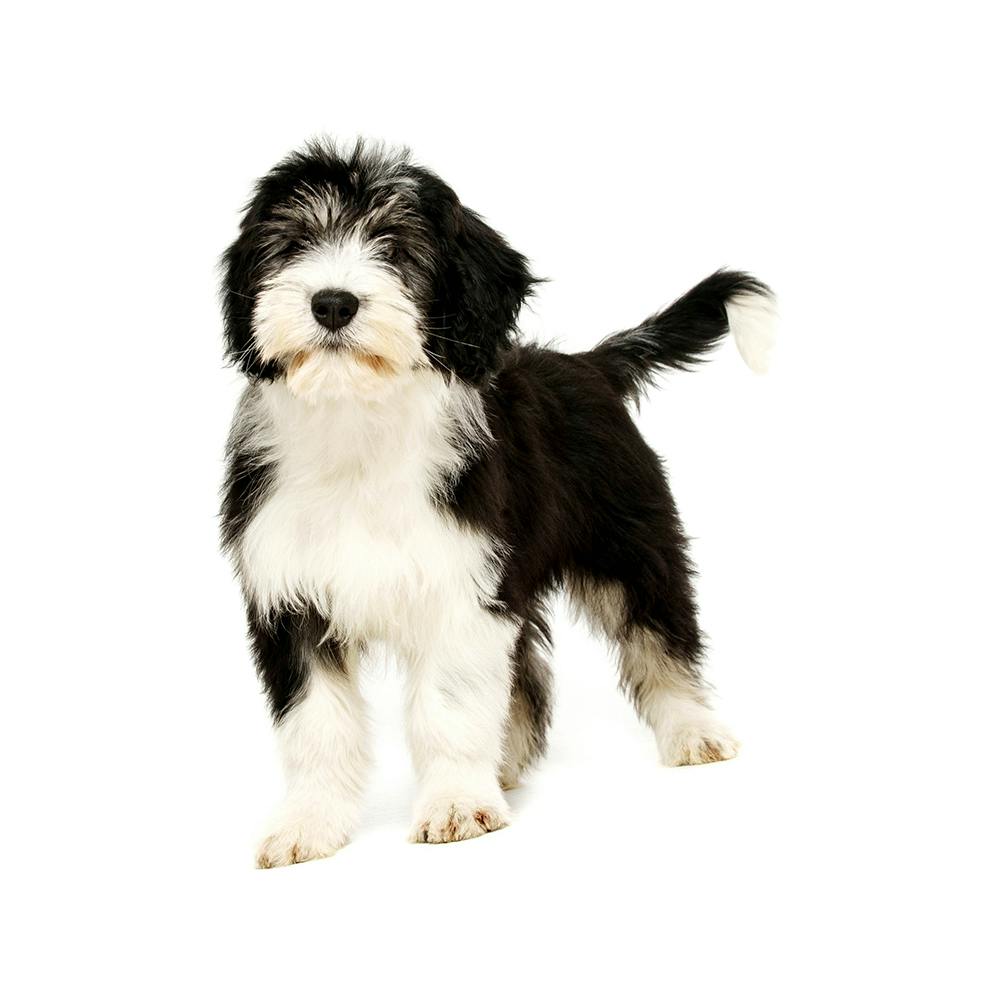
Polish Lowland Sheepdog
The Polish Lowland Sheepdog, also known as the Polski Owczarek Nizinny or PON, is a medium-sized, robust, and well-muscled dog breed renowned for its shaggy, double coat, and adaptable, intelligent nature. The Polish Lowland Sheepdog's history extends back to the 13th century, although the specifics of its origin are not well documented. They are thought to descend from the Puli, a Hungarian herding dog, which, when crossed with local Polish dogs, led to the breed we know today. As their name suggests, they were originally bred for herding and guarding sheep in the lowland plains of Poland. Over the centuries, these dogs proved highly adaptable and robust, able to work in a variety of conditions. After World War II, the breed was almost extinct, but through the efforts of breeders, particularly Dr. Danuta Hryeniewicz and her dog Smok, the PON was brought back from the brink. Today, they're cherished as both working dogs and family pets around the world.
- Origin
- Poland
- Alternate Names
- Polski Owczarek, Polski Owczarek Nizinny, PON
- Life Expectancy
- 12-14 years
- Average Male Height
- 18-20 inches
- Average Female Height
- 17-19 inches
- Average Male Weight
- 30-50 pounds
- Average Female Weight
- 30-50 pounds
- Coat Length
- Long
- Coat Type
- Double
- Coat Colors
- Beige, Black, Black & White, Brown, Chocolate & White, Gray, Gray & White, Tri-Colored, White, Beige & Brown, Beige & White, Beige & Black, Black & Gray, Black & Silver, White & Brown, White & Apricot, Red Black & White, White & Gold, White & Liver, White & Silver, White Gray & Tan
- Coat Pattern
- Tan Patches, Gray Tips, Gray Patches, Black Patches
Genetic Predispositions and Health
Polish Lowland Sheepdogs may suffer from atrioventricular heart block, hypothyroidism, neuronal ceroid lipofuscinosis, and patent ductus arteriosus. They may can also be affected by eye conditions such as cataracts, corneal dystrophy, persistent pupillary membranes, progressive retinal atrophy (central), and progressive retinal atrophy (rcd4). As a larger breed they are also at risk for developing orthopedic problems, such as hip and elbow dysplasia. Genetic testing is recommended, including for the following additional conditions: hyperuricosoria, degenerative myelopathy, and progressive rod-cone degeneration.
Personality and Behavior
Polish Lowland Sheepdogs are known for their intelligence, loyalty, and vigilance. They're excellent problem solvers and can be a bit independent, a trait common among herding breeds. They're generally good with children and other pets when properly socialized, but they can be reserved with strangers. They're also known for their excellent memory – once a PON learns something, good or bad, they're likely to remember it.
Fun Facts
The PON's coat is so dense that it's often hard to see their expressive eyes!
They're known for their unique "bear-like" shuffle when they move.
Their keen memory and intelligence can make them excellent at dog sports like obedience, agility, and herding events.
Despite their shaggy appearance, they're considered a low-shedding breed and can be a good choice for people with allergies.
One of the most striking features of the Polish Lowland Sheepdog is its dense, shaggy coat. They have a thick, double coat that is naturally waterproof and designed to keep them warm in harsh weather.
References
https://vgl.ucdavis.edu/breed/polish-lowland-sheepdog
https://www.akc.org/dog-breeds/polish-lowland-sheepdog/
https://www.ukcdogs.com/polish-owczarek-nizinny-poliski-owczarek-nizinny
https://www.fci.be/en/nomenclature/POLISH-LOWLAND-SHEEPDOG-251.html